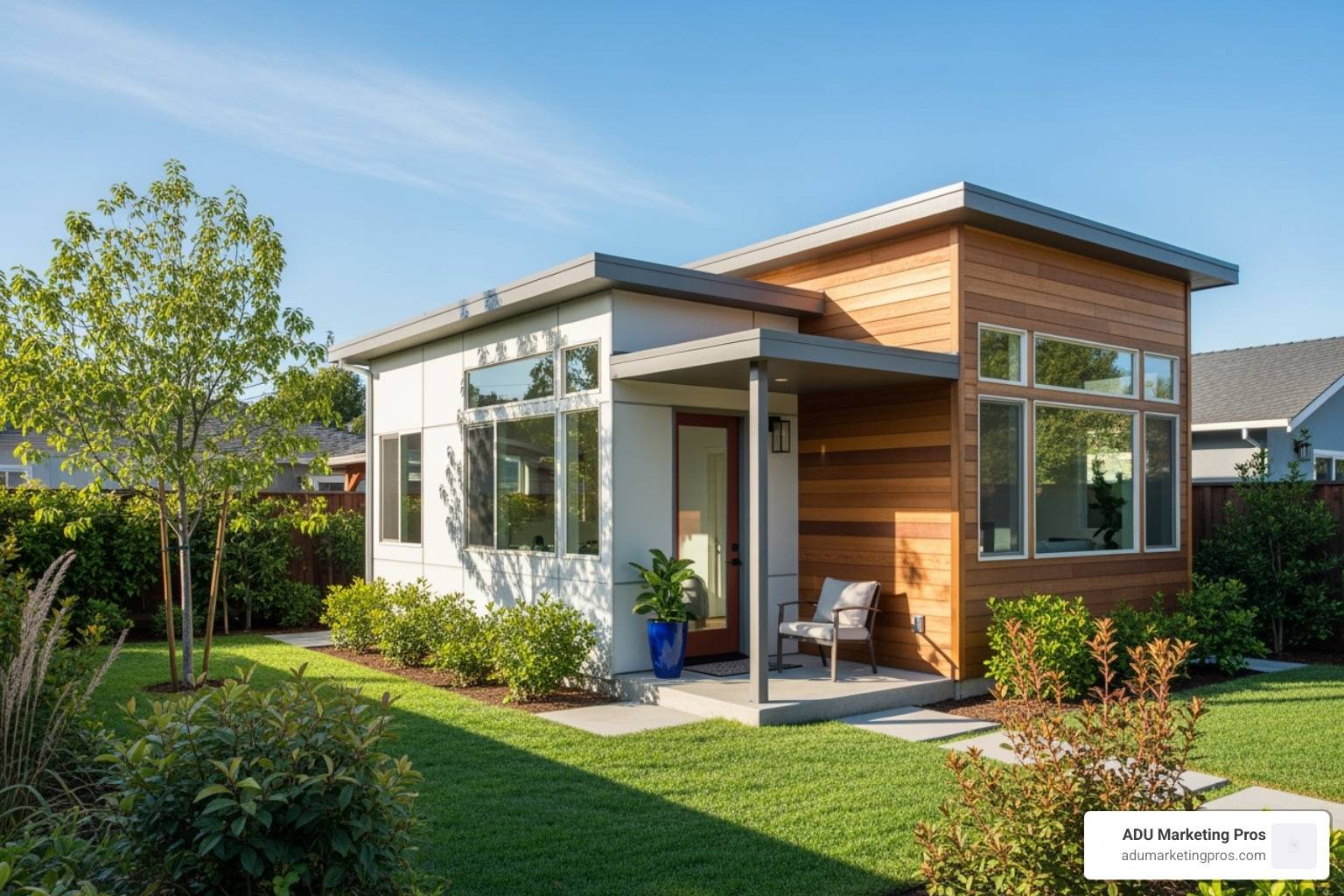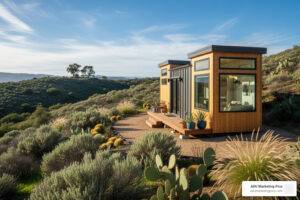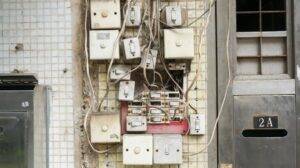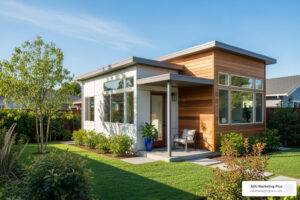The Real Cost of Building an ADU in San Jose: An Overview
For homeowners in San Jose, understanding the adu san jose cost is the critical first step toward unlocking the potential of their property. In a city defined by a competitive housing market and proximity to the heart of Silicon Valley, an Accessory Dwelling Unit (ADU) represents more than just extra space; it’s a strategic financial tool. Based on extensive market data and recent projects, here is a comprehensive look at what you can expect to invest.
Quick Cost Overview:
- Small ADUs (300-500 sq ft): $160,000 – $195,000. This range typically covers a studio or small one-bedroom unit with standard finishes, ideal for a garage conversion or a compact detached unit on a flat, easily accessible lot.
- Medium ADUs (550-750 sq ft): $200,000 – $245,000. Often a full one-bedroom unit, this size hits the sweet spot in San Jose, qualifying for impact fee waivers while providing ample living space.
- Large ADUs (800-1,000 sq ft): $260,000 – $300,000. These two-bedroom units are perfect for small families or generating premium rental income. Costs rise due to the larger footprint and the triggering of city impact fees.
- Maximum ADUs (1,050-1,200 sq ft): $310,000 – $330,000+. At this size, you are building a small home, often with higher-end finishes and more complex structural requirements, resulting in the highest project costs.
- Cost per square foot: $400 – $600 on average. This is a blended rate; smaller units have a higher cost per square foot due to fixed costs (kitchen, bathroom, utility connections) being spread over less area.
In San Jose’s dynamic real estate landscape, ADUs offer a versatile solution to add housing, generate substantial rental income, or create a private space for family. The total project cost is a complex equation influenced by the ADU type (detached, attached, conversion), specific site conditions (like a sloped lot or difficult access), the quality of finishes, and the labyrinth of local permit requirements. While detached ADUs command the highest price, they also offer the greatest privacy and potential property value increase. Conversely, garage conversions and Junior ADUs (JADUs) provide a more budget-friendly path by utilizing existing structures.
Recognizing the housing need, the City of San Jose has made efforts to streamline the ADU approval process and offers crucial fee waivers for units under 750 square feet, making smaller projects particularly attractive. However, homeowners must still budget carefully for building permits, potentially extensive utility upgrades, and other fees that can add tens of thousands to the final bill.

Why Understanding ADU Costs is Crucial
Embarking on an ADU project is a significant financial undertaking that demands a clear, detailed budget from the outset. A well-planned ADU is not an expense but an investment that can profoundly impact your financial future in several ways:
- Generate Significant Rental Income: The demand for housing in San Jose is relentless. A well-appointed one-bedroom ADU can easily command rents of $2,000-$2,500+ per month, creating a powerful passive income stream that can offset or even cover your mortgage.
- Dramatically Increase Property Value: Real estate experts and appraisers note that an ADU can boost your property’s market value by 20-30%. In a market like San Jose, this can translate to an equity increase of several hundred thousand dollars, far exceeding the initial construction cost.
- Provide Flexible, Affordable Housing: ADUs are the cornerstone of modern multigenerational living. They offer a perfect solution for aging parents who wish to be close to family while maintaining their independence, or for adult children saving for their own home. This provides privacy and proximity, saving families tens of thousands annually on rent or assisted living costs.
This guide is designed to demystify every component that influences the adu san jose cost. We will dissect everything from the nuances of different ADU types and the complexities of permit fees to proven cost-saving strategies and how to accurately calculate your return on investment, empowering you to make an informed decision.
A Detailed Breakdown of the ADU San Jose Cost
Calculating the adu san jose cost requires moving beyond a simple cost-per-square-foot estimate. A realistic budget is a composite of three distinct categories: soft costs for planning, hard costs for construction, and site costs for preparation and utilities. Understanding the details within each category is the key to avoiding surprises and ensuring your project stays on track financially.
Soft Costs: The Planning Phase ($15,000 – $50,000+)
Before a single shovel hits the ground, you will invest in the intellectual and administrative work that forms the project’s foundation. These soft costs are non-negotiable for a legal and well-executed build.
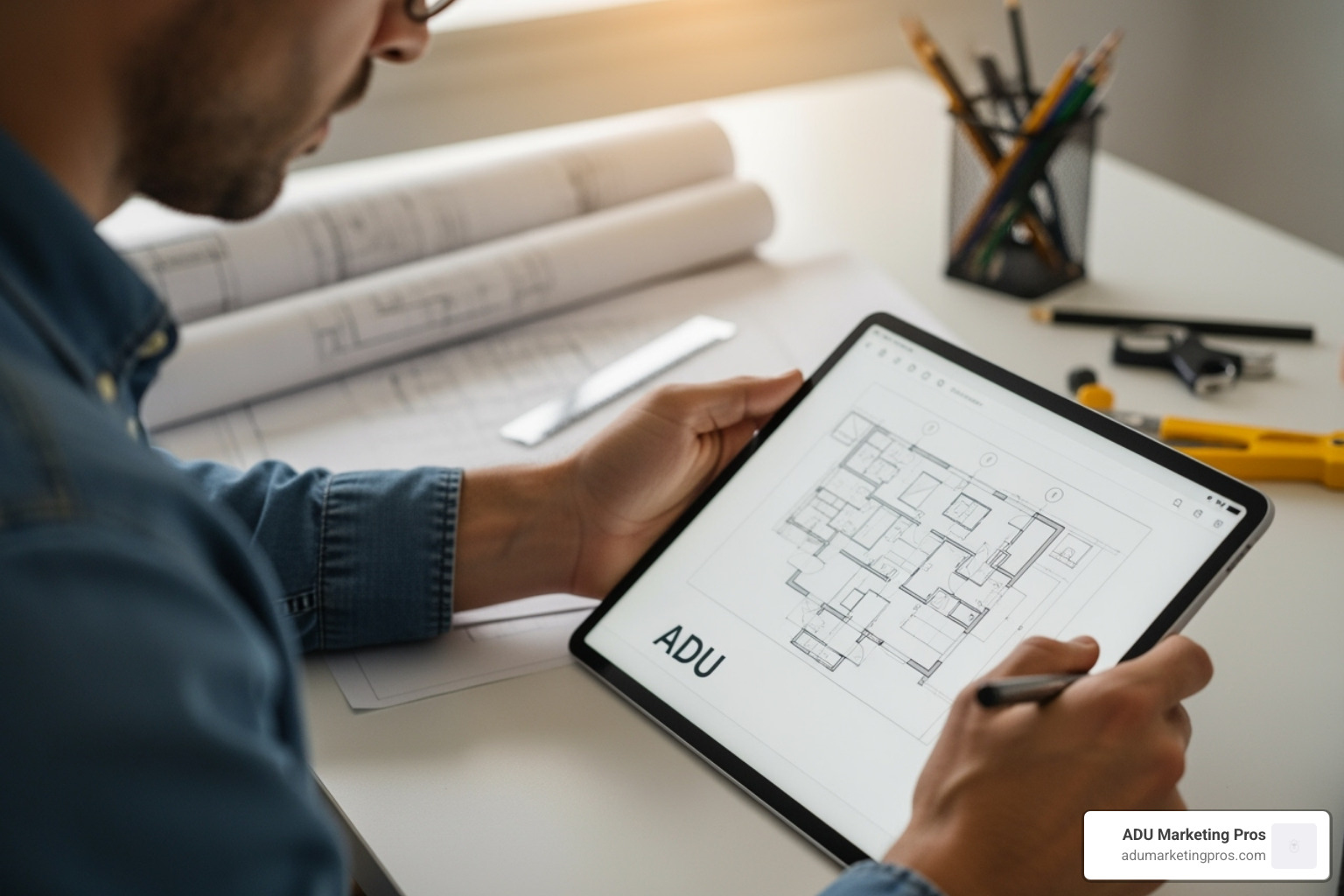
- Architectural & Design Fees: This is where your vision takes shape. Expect to pay $8,000 to $15,000 for a full set of custom architectural plans. This includes schematic design, design development, and construction documents. Opting for pre-approved or stock plans can reduce this cost to the $3,000-$6,000 range, but offers less customization.
- Structural Engineering: A licensed structural engineer must review your plans to ensure they can withstand earthquakes and other loads. These vital calculations and drawings typically cost between $2,500 and $5,000, depending on the complexity of the design (e.g., large open spans, cantilevered sections).
- Title 24 Energy Calculations: California law mandates this report, which proves your ADU meets stringent energy efficiency standards for insulation, windows, and HVAC systems. This service usually costs between $500 and $1,000.
- Permit & Plan Check Fees: This is a significant soft cost in San Jose. Fees can range from $8,000 to over $30,000. This total includes the plan check fee (for reviewing your documents), the building permit fee itself, and various smaller fees for electrical, plumbing, and mechanical permits. The city’s most significant cost-saving incentive is the waiver of school and parkland impact fees for any ADU under 750 square feet, which can save you over $15,000 alone.
Hard Costs: The Construction Phase ($150,000 – $500,000+)
Hard costs represent the bulk of your budget, covering all physical labor and materials required to build the ADU. In the high-cost Bay Area, both materials and skilled labor come at a premium.
- Labor, Materials, and Contractor Fees: This accounts for the largest slice of the pie, typically running $300-$500 per square foot. This figure includes the General Contractor’s fee (usually 10-20% of the project cost) which covers management, insurance, and overhead.
- Core & Shell Construction: This is the skeleton and skin of your ADU. A new concrete foundation can cost $15,000-$25,000. Wood framing for a typical 600 sq ft unit can average $25,000. Roofing materials and labor might add another $10,000-$15,000.
- Major Systems (Plumbing, Electrical, HVAC): Roughing in plumbing and electrical can cost $15,000-$30,000 combined. A new, efficient HVAC system (like a ductless mini-split) will cost around $6,000 to $10,000 to ensure comfortable, energy-efficient heating and cooling.
- Exterior & Interior Finishes: This is where costs can vary wildly based on your taste. Siding, windows, and doors make up the exterior. Inside, drywall, paint, flooring, and trim can run from $10 per square foot for basic finishes to over $60 for high-end materials like hardwood floors and custom millwork.
- Kitchen and Bath: These are the most expensive rooms per square foot. A complete kitchen appliance package (refrigerator, range, dishwasher, microwave) can range from $3,000 for standard models to $10,000+ for premium brands. Cabinetry and countertops can add another $5,000-$20,000. Bathroom fixtures, tile, and vanities can easily add $5,000-$15,000.
As detailed in this guide by Rost Architects, making thoughtful choices about materials and design is essential for balancing upfront costs with long-term durability and value.
Site Preparation & Utility Costs ($10,000 – $50,000+)
These are the most unpredictable costs, as they are entirely dependent on your specific property. A thorough site evaluation by your contractor or architect is the only way to get an accurate estimate.

- Site Conditions & Access: A flat, clear lot is the ideal scenario. Sloped lots can add 10-20% to foundation and grading costs due to the need for retaining walls and extra excavation. Poor backyard access (narrow side yards) can also increase labor costs, as materials may need to be hand-carried instead of delivered by machine.
- Utility Connections: This is a major expense. Tying into existing water, sewer, and electric lines requires trenching and skilled labor. In San Jose, city utility connection fees alone can range from $2,000 to $7,000. The total cost for trenching and connection work can easily reach $11,400 to $25,000 or more, especially if the connection point is far from the ADU site. Deciding whether to install a separate electric meter involves contacting the PG&E Building and Renovation Service Center and can add several thousand dollars, but allows for separate billing.
- Landscaping & Finishing Touches: Don’t forget to budget for the final elements that make the ADU habitable and attractive. This includes basic landscaping ($4-$12 per sq ft), pathways, fencing for privacy, and waste disposal fees for construction debris.
ADU Costs by Type: Which Option Fits Your Budget?
The single biggest decision influencing the final adu san jose cost is the type of ADU you choose to build. Each option presents a unique balance of cost, privacy, construction complexity, and potential return on investment. The spectrum ranges from highly affordable internal conversions to premium, custom-built backyard homes.
Understanding the Average ADU San Jose Cost by Type
- Detached ADUs: $200,000 – $600,000+. This is the top-tier option, offering maximum privacy, rental income, and property value increase.
- Attached ADUs: $150,000 – $350,000. A cost-effective choice that involves building an addition that shares at least one wall with the main home.
- Garage Conversions: $80,000 – $200,000. Delivers excellent value by transforming an existing, underutilized structure into a fully functional living unit.
- Junior ADUs (JADUs): $60,000 – $150,000. The most affordable path, created by converting existing space within your home’s primary footprint.
Detached ADU: The Backyard Cottage ($200,000 – $600,000+)
A detached ADU is a brand-new, standalone home built in your backyard. It is the most desirable type for both renters and future buyers, offering a true sense of separation and privacy. This autonomy, however, comes at the highest cost. A detached unit requires a completely new foundation, full framing and roofing, and independent utility connections trenched from the street or main house. The design possibilities are vast, allowing for custom layouts and architectural styles, but every element is built from scratch, which is reflected in the price tag. Despite the high initial investment, detached ADUs typically offer the highest return on investment through premium rental rates and the largest boost to your property’s appraisal value.
Attached ADU: The Home Addition ($150,000 – $350,000+)
An attached ADU functions as a seamless extension of your main house, sharing a wall and often a roofline. This approach is more cost-effective than a detached unit primarily because it can often leverage the existing structure. Utility hookups can be shorter and less complex, and you save on building one exterior wall. The primary challenge lies in skillfully integrating the addition with the existing home’s architecture and ensuring proper soundproofing between the two units. While it offers less privacy than a detached cottage, an attached ADU is an excellent way to create a connected but separate space for family members or to generate rental income at a lower entry cost.
Garage Conversion ADU: The Smart Repurpose ($80,000 – $200,000+)

Converting an existing garage is frequently the most financially savvy way to add a full-featured dwelling unit. The immense cost savings come from using the existing foundation, walls, and roof structure. This not only reduces material and labor costs but also significantly shortens the construction timeline. However, a garage conversion is not merely a cosmetic update. It requires significant work to become a legal, habitable space. Common “hidden costs” include reinforcing the foundation to support a living space, raising the floor and installing a vapor barrier to prevent moisture, fully insulating the walls and ceiling, replacing the garage door with a properly framed and weatherproofed wall system, and often upgrading the electrical panel to handle the increased load. Despite these necessary upgrades, the all-in cost is typically far less than a new build.
Junior ADU (JADU): The Efficient Solution ($60,000 – $150,000)
A Junior Accessory Dwelling Unit (JADU) is the most affordable ADU option because it is created within the existing, conditioned footprint of your single-family home, such as by converting a spare bedroom. By law, a JADU cannot exceed 500 square feet. It must have its own separate exterior entrance and an efficiency kitchen (with limited appliances and counter space), but it can share a bathroom with the main house. The dramatic cost savings stem from the ability to use the home’s existing plumbing, electrical, and HVAC systems, eliminating the need for expensive trenching and new equipment. According to San Jose’s JADU Zoning Ordinance, the property owner must reside in either the JADU or the main home, making this an ideal solution for housing a family member or a caregiver, rather than for purely investment-focused landlords.
San Jose Permits, Fees, and Regulations
Successfully navigating the City of San Jose’s bureaucracy is a non-negotiable part of managing your ADU budget. While state laws have pushed cities to streamline ADU approvals, a complex web of permits, fees, and regulations remains a substantial component of the total adu san jose cost. Understanding these costs upfront is essential for accurate financial planning.
How San Jose Regulations Impact the Total ADU San Jose Cost
City fees are levied to cover the costs of essential municipal services, including plan reviews, site inspections, and the impact of a new housing unit on public infrastructure. For an ADU project, these are the key costs to anticipate:
- Building Permit & Plan Review Fees: This is the primary fee paid to the city’s permit center. It typically ranges from $8,000 to $15,000 or more, calculated based on the project’s valuation. This fee covers the time city staff spend reviewing your architectural and structural plans for code compliance and the multiple inspections required during construction (e.g., foundation, framing, final).
- Impact Fees: This is where homeowners can achieve the most significant savings. For ADUs 750 square feet or larger, the city charges school, parkland, and other development impact fees. These can easily add $15,000 to $25,000 to your project cost. However, in a crucial incentive, these impact fees are completely waived for any ADU under 750 square feet. This makes building a slightly smaller unit a powerful cost-saving strategy.
- Utility Connection Fees: If you are building a detached ADU, you will need to pay fees to connect to the city’s water and sewer systems. These capacity and hookup charges can cost between $2,000 and $7,000, separate from the physical cost of trenching and plumbing work done by your contractor.
Fee schedules change regularly. Before finalizing your budget, you must consult the official Accessory Dwelling Units (ADUs) | City of San José page for the most current fee information and regulatory updates.
Property Tax Implications
One of the biggest fears for homeowners is that building an ADU will trigger a full reassessment of their property at today’s high market values, leading to a massive property tax hike. Fortunately, this is not the case. California law protects homeowners with a “blended assessment” approach. Your primary home retains its original assessed value under Proposition 13. Only the value of the newly constructed ADU is added to your property’s tax base.
For example, if your home has a current assessed value of $700,000 and you build an ADU for $300,000, your new total assessed value for tax purposes will be $1,000,000. Your property tax will only increase based on the added $300,000 value, not on the new, higher market value of your entire property. This results in a predictable and manageable increase. The Santa Clara County Assessor’s website provides detailed examples and official information on how new ADUs are valued.
Typical Project Timeline in San Jose
From the first design sketch to the final inspection, a typical ADU project in San Jose takes between 8 and 18 months. This long timeline requires patience and careful financial management.
- Phase 1 – Design & Engineering (2-4 months): This phase involves hiring an architect or designer, conducting a feasibility study, developing the design, and creating detailed construction documents and engineering plans.
- Phase 2 – Permitting & City Review (2-4 months): Your completed plans are submitted to the San Jose Permit Center. This phase includes the initial plan check, responding to comments or correction requests from the city, and final permit issuance. Delays are common if plans are incomplete or inaccurate.
- Phase 3 – Construction (4-8 months): The longest phase. This includes site preparation, foundation, framing, rough-in of major systems, insulation, drywall, interior and exterior finishes, and final utility connections.
- Phase 4 – Final Inspections (1-2 weeks): A city inspector visits the site to sign off on the completed work, ensuring it matches the approved plans and meets all safety codes. Once passed, you receive a Certificate of Occupancy.
Maximizing Your Investment: Saving Money and Boosting ROI
While building an ADU in San Jose is a significant capital investment, strategic planning and smart decision-making can effectively control the adu san jose cost and dramatically enhance your long-term financial returns. The goal is to build efficiently without compromising quality or long-term value.
Effective Ways to Save on Construction
Controlling your budget is about making informed choices at every stage of the process. These are the most effective strategies for reducing your all-in cost:
- Build Under 750 sq. ft.: This is the single most impactful cost-saving measure in San Jose. By keeping your ADU at 749 square feet or less, you completely avoid city impact fees for schools and parks, which can save you upwards of $15,000 instantly.
- Use Pre-Approved or Stock Plans: The City of San Jose offers a gallery of pre-approved ADU plans. Using one of these can save you thousands in custom architectural fees and potentially shorten the city’s plan review timeline. The trade-off is a lack of customization.
- Choose Standard, Durable Finishes: The cost of finishes can spiral out of control. Opt for quality, builder-grade materials for the majority of the project. For example, choose luxury vinyl plank (LVP) flooring over hardwood for durability and cost savings. Reserve your budget for one or two high-impact splurges, like quartz countertops or a unique bathroom tile, that elevate the space.
- Convert Existing Space (Garage or JADU): A garage conversion or JADU leverages your existing structure—foundation, walls, and roof—which can cut 20-40% off the cost of a new detached ADU. This is the most direct path to a lower overall budget.
- Compare Prefab vs. Stick-Built Carefully: Prefabricated ADUs, built in a factory and delivered to your site, can offer faster build times and predictable costs. However, you must compare the all-in price, which includes design, fabrication, delivery, crane rental for installation, foundation work, and utility hookups. In many cases, especially on complex sites, a traditional stick-built ADU can be more cost-effective.
- Hire an Experienced Design-Build Team: While it may seem counterintuitive, paying for a reputable, experienced team can save you money. A professional design-build firm that specializes in ADUs in San Jose will anticipate permitting issues, manage subcontractors efficiently, and prevent costly errors and delays that can plague inexperienced builders or DIY projects.
Financing Your San Jose ADU
Few homeowners have the cash on hand to fund an entire ADU project. Fortunately, strong property values in San Jose provide excellent financing opportunities:
- Home Equity Line of Credit (HELOC): A popular option that works like a credit card secured by your home. You draw funds as needed to pay for project milestones, and only pay interest on the amount you’ve drawn. Rates are typically variable.
- Cash-Out Refinance: You take out a new, larger mortgage on your primary home, pay off your existing mortgage, and receive the difference in cash to fund the ADU. This often secures a fixed interest rate but may reset the term of your loan.
- Construction & Renovation Loans: These are specialized loans (like an FHA 203k loan) designed for building projects. Funds are held in escrow and disbursed to your contractor at specific construction milestones, protecting both you and the lender.
- California’s ADU Grant Program: The state of California offers a grant of up to $40,000 to help lower-to-moderate-income homeowners cover pre-development and non-recurring closing costs. This can significantly reduce the upfront cash needed for things like design, engineering, and permit fees.
Calculating Your Return on Investment (ROI)
An ADU is a powerful wealth-building asset. The ROI comes from three primary sources:
- Monthly Cash Flow from Rental Income: A one-bedroom ADU in San Jose can generate $2,500/month ($30,000/year). After accounting for your loan payment, increased property taxes, insurance, and a maintenance fund (budget 5-8% of annual rent), the remaining positive cash flow is your direct return.
- Forced Appreciation and Property Value Increase: An ADU can increase your property’s market value by 20-30%. Building a $250,000 ADU could increase your property value by $400,000 or more in the San Jose market, creating instant equity.
- Multigenerational Savings: The financial benefit of housing a family member can be immense. Compared to the average cost of assisted living ($6,000+/month) or the high rent for a separate apartment, an ADU provides a more affordable and supportive living situation, saving the family tens of thousands of dollars annually.
Frequently Asked Questions about ADU Costs in San Jose
Homeowners considering an ADU often have similar questions about the process and, most importantly, the cost. Here are direct, detailed answers to the most common inquiries regarding the adu san jose cost.
What is the cheapest way to build an ADU in San Jose?
The most affordable way to build an ADU is to leverage an existing structure. This means a Junior ADU (JADU) or a garage conversion will almost always be your lowest-cost options.
- JADUs (up to 500 sq. ft. within your home) are cheapest because they utilize the home’s existing foundation, walls, roof, and major systems like HVAC and plumbing. The primary costs are creating a separate entrance, adding an efficiency kitchen, and any necessary remodeling.
- Garage conversions are the next most affordable. You save tens of thousands by using the existing foundation, frame, and roof. The main costs involve legally converting the space for habitation: upgrading the foundation slab, insulating, running new plumbing and electrical, and replacing the garage door with a wall and windows.
Beyond the type, the most critical cost-saving strategy is to keep the unit under 750 square feet. This allows you to qualify for a waiver on city impact fees (for schools, parks, etc.), which can save you over $15,000 right off the top.
How much does an ADU increase property taxes in San Jose?
Your property taxes will increase, but not as much as you might fear. Your entire property is not reassessed at its new, higher market value. California uses a “blended assessment” system for properties with new ADUs.
Here’s how it works: Your primary home’s assessed value remains protected under Proposition 13. The County Assessor will only add the value of the newly constructed ADU to your existing tax base. For example: If your home’s current assessed value is $600,000 and you build an ADU that cost $250,000, your new assessed value will be approximately $850,000. Your new, higher property tax bill will be calculated based on this $850,000 figure, not the $1.5M+ your property might now be worth on the open market. This results in a predictable and manageable tax increase. For official details, consult the Santa Clara County Assessor’s website.
How long does it take to get an ADU permit in San Jose?
The permitting process in San Jose, from the day you submit your plans to the day you have an approved permit in hand, typically takes 2 to 4 months. By state law, the city must provide comments or approve a submitted ADU application within 60 days. San Jose’s internal goal is to complete the first plan review within 20 business days.
However, this timeline is heavily dependent on the quality and completeness of your initial submission. Delays are common and are almost always caused by:
- Incomplete or inaccurate architectural plans.
- Missing structural engineering calculations.
- Plans that do not comply with zoning codes (e.g., setbacks, height limits).
- An incomplete Title 24 energy report.
Working with an experienced architect or design-build firm that is intimately familiar with San Jose’s specific requirements is the best way to avoid these pitfalls and prevent months of costly delays.
Can I act as my own general contractor to save money?
While technically possible for a homeowner to act as an “owner-builder,” it is strongly discouraged unless you have extensive construction management experience. While you might save the 10-20% general contractor fee, the risks are enormous. You would be responsible for hiring, scheduling, and managing all subcontractors, sourcing materials, ensuring code compliance, and passing all city inspections. A single mistake, like a failed framing inspection, can cause a cascade of delays and costs that quickly erase any potential savings. For most homeowners, the peace of mind and efficiency provided by a professional GC is well worth the cost.
Start Your ADU Journey with Confidence
Building an Accessory Dwelling Unit in San Jose is arguably one of the most powerful financial decisions a homeowner can make in today’s market. While the adu san jose cost is substantial and requires meticulous planning, the multifaceted rewards—from a steady stream of rental income and a massive boost in property value to providing a home for loved ones—are undeniable and transformative.
Your path to a successful project is paved with informed decisions. By choosing the right ADU type for your budget and goals, deeply understanding San Jose’s fee structures and regulations, and partnering with seasoned professionals, you can navigate the process effectively and keep your budget and timeline in check. A garage conversion kept under 750 square feet may offer the most accessible blend of affordability and high function, while a new detached unit can maximize your long-term rental income and equity growth.
The financial case is overwhelmingly positive. With the potential for $2,500+ in monthly rental income and a proven property value increase of 20-30%, a well-executed ADU is a powerful asset that begins paying for itself from day one and continues to build wealth for years to come.
For the construction and architecture firms at the forefront of this housing revolution, the ADU boom represents a generational opportunity. Homeowners are actively seeking expert partners to guide them through this complex but rewarding process. ADU Marketing Pros specializes in helping these builders and architects connect with qualified clients. We do this by developing marketing strategies that showcase their deep expertise, highlight their proven track record, and build trust-based relationships. Our approach empowers our clients to stand out in a crowded market by competing on the value of their experience, not just on price.
Ready to see how the costs and opportunities in San Jose stack up against the rest of the region? We invite you to explore our comprehensive guide to learn more about Bay Area ADU costs and gain a broader perspective on market trends.
Armed with the right information and the right team, you can embark on your ADU journey with the confidence required to unlock the full potential of your property and secure a more prosperous future.

